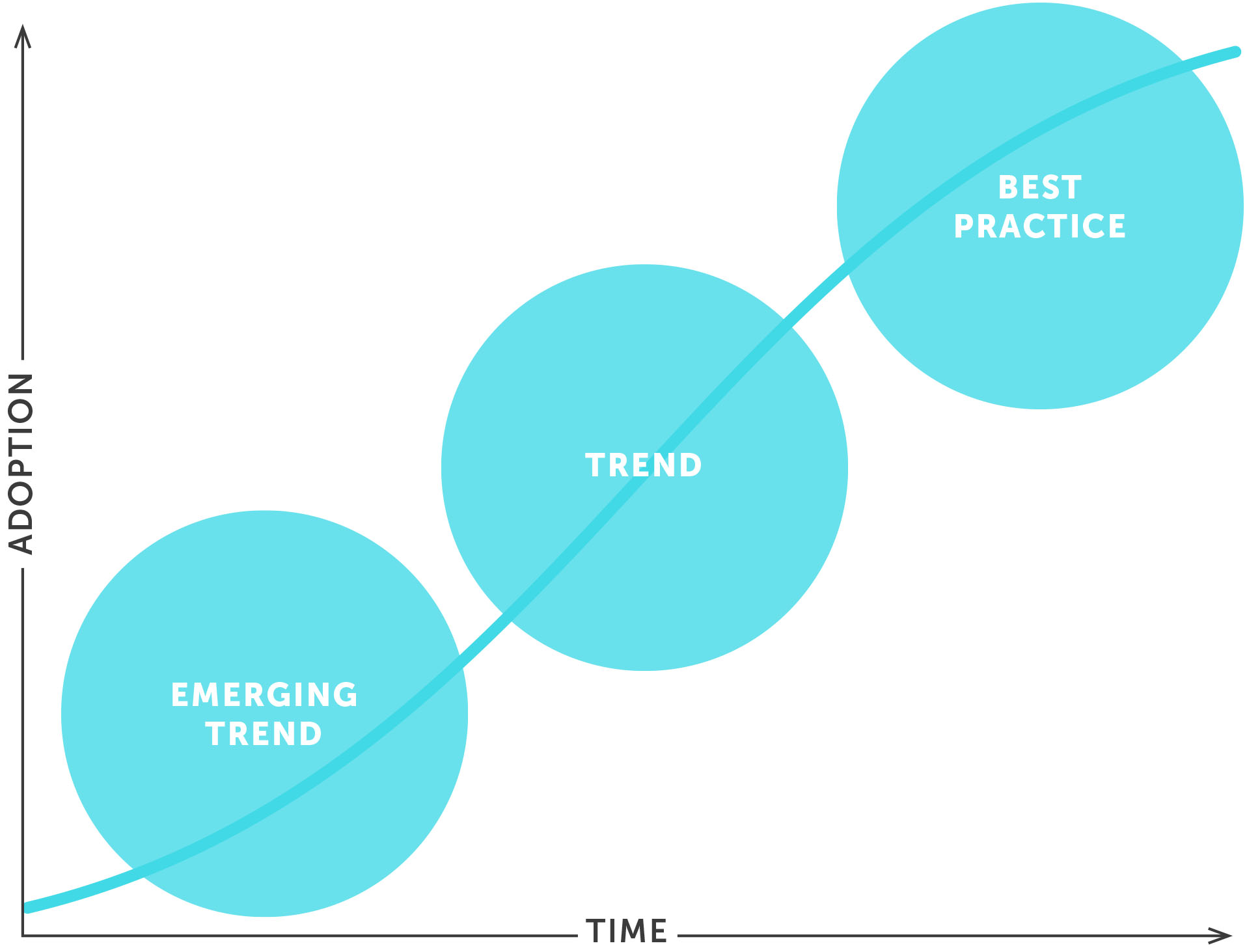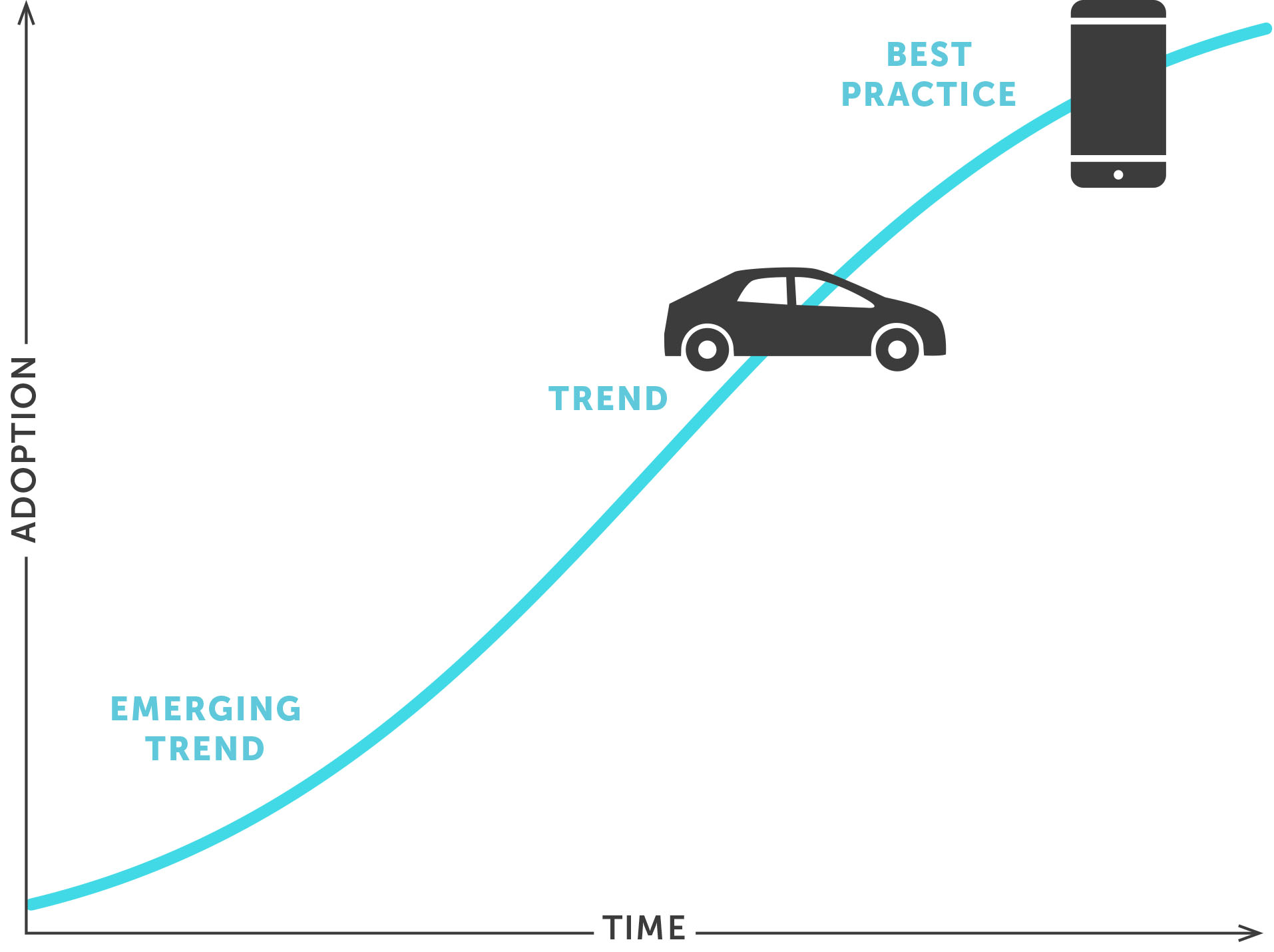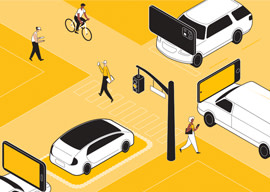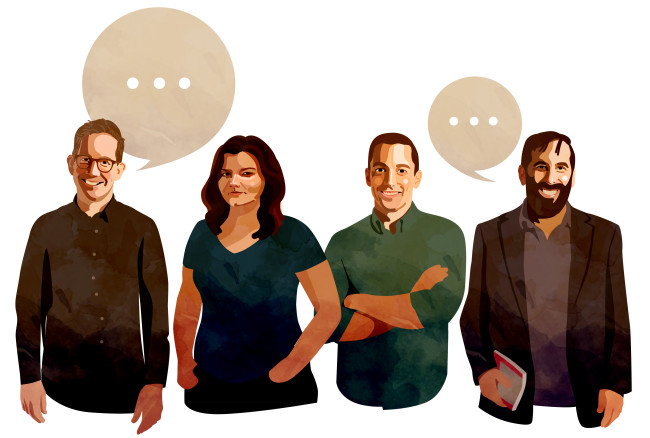
For years, carmakers have been chasing after the smartphone in pursuit of the ideal cockpit environment.
Why? Drivers’ phones are more up-to-date than on-board computers. They’re also faster, connected, and easier to use. As a result, individual drivers often bypass their car’s infotainment system, opting to use their phone’s connected services instead.
Truth is, carmakers are behind the curve on implementing today’s best technology practices, which is why they need to pay attention, and even adapt, to certain tech trends.
Many of the trends below aren’t new. They’ve been best practices in the world of smartphones and software for years. Automakers should pay close attention, as they have much work to do before they reach the standard that apps and mobile operating systems have set.
Now that carmakers are experimenting with new interaction paradigms, emerging technology, and operating models, we are seeing more interesting opportunities for them to differentiate beyond the smartphone analogy. We will explore those trends in a three-part series—the first of which focuses the evolution of the in-vehicle interface.

Beyond the Touchscreen
With smartphones’ dominance front-of-mind, carmakers keep trying to differentiate themselves by multiplying the number of touchscreens in their vehicles, making them bigger and more prominent.
For drivers, swapping to their phones in the cockpit is not about the display. Drivers are in search of the seamlessly connected, up-to-date, easy-to-use, and relevant services on their phones.
Rather than making an oversized smartphone the focal point of the cockpit experience (looking at you, Tesla!), car companies would be better served to study the principles that have made the smartphone successful and apply those to the design of their connected car experiences. We’ve identified how these principles are now sparking trends in the automotive industry, beyond the touchscreen
We’re seeing some interesting new car-appropriate interactions that blend mechanical and digital controls.
We love our smartphones because of the multi-touch screens that let us use natural and intuitive gestures, rather than the point-and-click interfaces of our personal computers. But translating the smartphone experience into the auto interface presents some challenges.

Proliferating Distraction
Despite evidence proving how ill-fitted touchscreens are to the automotive space, they are nonetheless getting bigger and more plentiful in new vehicles.
The race to pump up new features and screen-based experiences is driven by the revved-up competition between car brands. At the same time, customers are becoming more educated around safety and usability concerns. This inherent paradox is an opportunity for carmakers to seek more harmonious, simple, and intuitive solutions.
Out in the Wild
Using Android Auto, it takes 20 seconds of cumulative glances to play a song on Spotify. The Economist
Tesla has essentially built a huge touchscreen as the focal point of the cockpit, and consequently it pulls drivers’ focus away from the road. Treehugger
Byton’s only trick in the book appears to be adding more screens, which has been met with both excitement and trepidation. The Verge
Li Xiang’s One SUV has four screens—three across the dash, and one in the lower center console. Car Scoops
Mazda tests its interfaces by blindfolding drivers to ensure the controls allow drivers to keep their eye on the road. No touchscreen can pass that test. UX Collective
Usability studies found that even when drivers weren’t actively performing tasks, their eyes were still drawn to the screen hoping to see something new. Jalopnik
Interface Experimentation
Remember the first time you swiped to scroll or pinched to zoom in and out? It was magical.
Cars don’t need to add touchscreens to create natural and intuitive, even gestural, interactions. Now, automotive brands are experimenting with different input modes including some really clever hardware solutions (proximity sensors, light and UV sensors, force sensors, and haptic feedback) connected to seamless interfaces. These are only glimmers of what’s possible though, and we’re keen to see more exploration in this space.
Out in the Wild
Canoo’s new car is completely screen-free. “A minimal dot-matrix-style LED light bar indicates vehicle’s gear, speed and emergency functions.” New York Times
Mercedes allows you to reach for the overhead light or the vacant passenger seat and the interior space illuminates. These are exactly the low-stakes, high-convenience functions that are the perfect application for gesture control. Motormouth
Hyundai is playing around with the idea of dressing up the steering wheel with oversized touchscreen buttons that deliver haptic feedback. Pocket Lint
Speak Plainly
A decade has passed since Siri's debut, and smartphone users now expect voice control to be standard.
Carmakers have delivered: Almost every major auto manufacturer has integrated voice controls in some form. Whether partnering with well-known voice assistants or developing their own technology in house, it has become a must-have for high-end vehicles—especially in the race for AI-enabled voice assistants that will transition the driving experience into autonomous vehicles. Despite the excitement, researchers have proven that voice adds just as much cognitive load as touchscreens. Carmakers might need to keep looking for the new interaction paradigm for connected vehicles.
Out in the Wild
Following its heritage of accessing human voice assistants through On Star, GM cars can now be upgraded with an Alexa digital voice assistant as well. The Verge
Drivers of the new Polestar 2 will be able to use Google Assistant to verbally interact with Google apps in the infotainment system. Car and Driver
You can give a new Mercedes’ more oblique commands like “I am cold,” rather than the more exhaustive, “Turn the temperature to 68 degrees.” TechCrunch
A number of high-profile collaborators—Amazon, Baidu, BMW, Cerence (formerly Nuance), ecobee, Microsoft, Orange, Salesforce, SFR, Sonos, Spotify, Sound United, Tencent, Verizon—are working to allow multiple wake words on a single device. Automotive World
Opportunities
Be bold. Drivers currently work with a mishmash of mechanical controls (e.g. steering wheel and brakes), digital inputs (e.g. buttons and touchscreens), and attention-sucking communications (calls, text messages, social media). Adding new buttons and controls usually just adds confusion. Over the last decade, we’ve seen myriad new functions incorporated into the cockpit; now it’s time for carmakers to reimagine the cockpit experience, reconsidering what every control is for, and even taking some away. Imagine drivers as the conductors of a complex orchestra of interactions, from dealing with the ringing of their phone, to adjusting the air, and even hitting the brakes and turning on their hazard lights at the sight of a rogue skateboarder—all with a unified, simple interface.
Keep experimenting. Many carmakers wrote off gestural interfaces long ago, assuming they are too awkward and too buggy to really work. But as sensors improve and AI makes it easier to distinguish the intentional from the unintentional, gestures in all forms—from a wiggle of your fingers to a wave of your hand—will become more stable and more relevant.
Talk with drivers. As automakers experiment with new interfaces, they should weave drivers into the decision-making process and listen to them. When talking about interfaces, we often hear drivers ask for simplicity, and we see carmakers trying to add more and more controls. There’s a disconnect here that could be remedied with better listening. They should test how new ideas resonate, and test well-polished ideas to make sure they are working like they should. Drivers can say exactly what works and what doesn’t, and in the end, theirs are the perspectives that matter most.
Thanks for joining us in our automotive trends journey. In our next post, we’ll look at inspired software. See you down the road!





